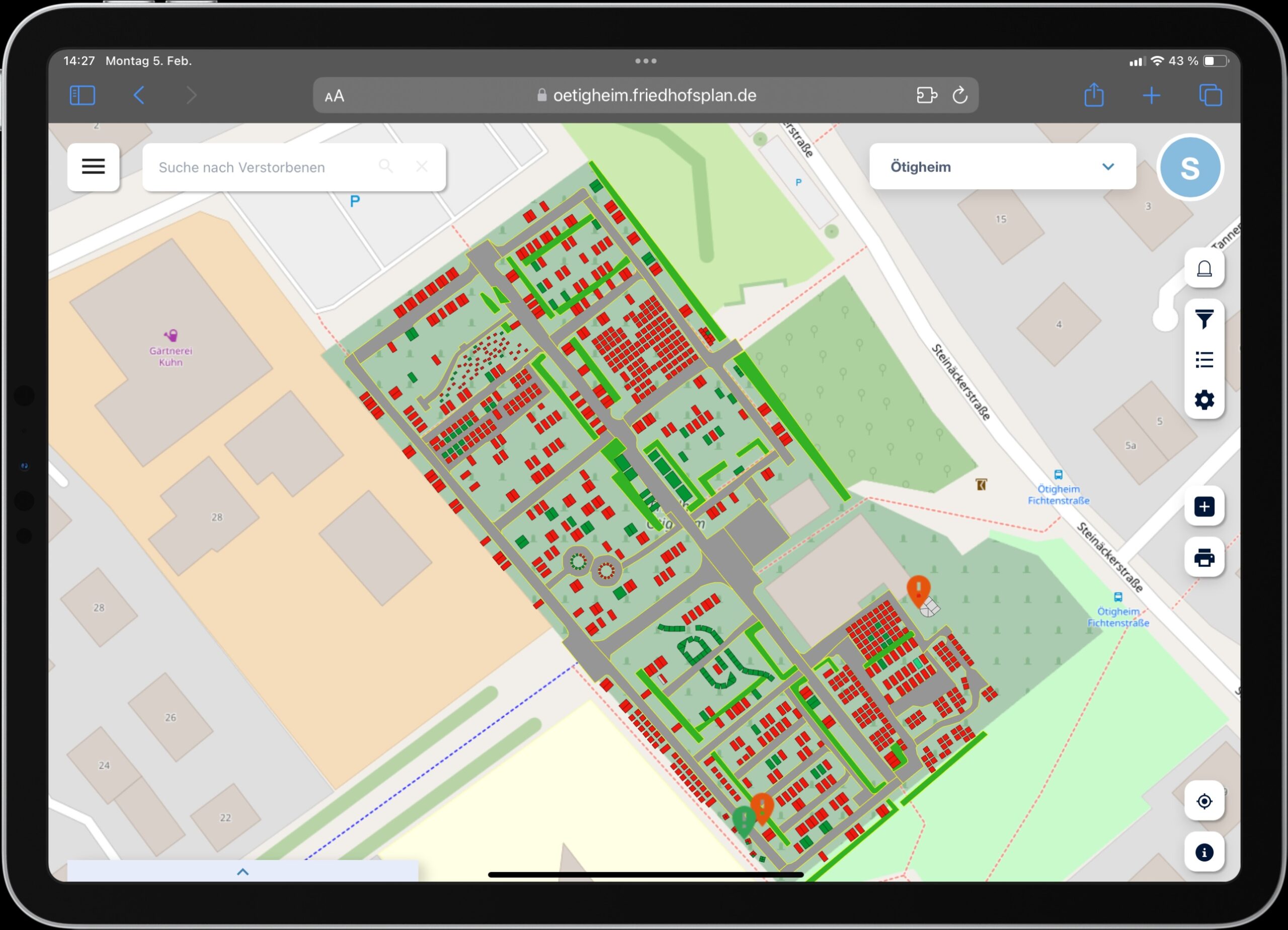The digital cemetery plan simplifies and accelerates workflows in cemetery administrations. Publishing it on the internet using web technology can also significantly improve grave-based communication. Stefan Schumacher explains how this can be achieved using the example of tombstone applications.
By quickly locating grave and deceased data with the digital cemetery plan, internal administrative processes can be greatly accelerated. Graphical evaluations provide new insights into cemetery data and form a solid foundation for strategic cemetery planning.
Online Publication
Additionally, the digital cemetery plan can be published outside of administration, for example, on the internet. Integration into the cemetery administration’s website can be done without technical limitations. Any information can theoretically be provided, with the occupancy plan being particularly interesting. This allows citizens and relatives to independently access the digital cemetery plan, increasing the cemetery administration’s service quality while reducing effort.
Simplified Communication
Beyond the occupancy plan, further grave-based information can be linked with the digital cemetery plan, expanding it into an online communication tool. This is particularly useful for communication between the cemetery administration and:
- Monument masons,
- Funeral directors,
- Cemetery gardeners.
For instance, an online grave reservation by funeral directors can improve the service for the bereaved and simplify the entire grave reservation process. Similarly, an online tombstone application can significantly enhance communication between monument masons and the cemetery administration.
The Online Tombstone Application
Generally, two perspectives of the tombstone application must be distinguished: that of the applicant and that of the cemetery administration. Applicants are usually the monument masons who, authorized by the bereaved, submit the tombstone application according to the cemetery’s regulations and technical guidelines. By linking the digital cemetery plan with the cemetery regulations, applicants can submit a tombstone application based on a specific field or grave. Selecting a particular grave or grave field automatically preselects the relevant tombstone data according to the regulations, initiating the application process by selecting a grave or grave field.
The online tombstone application must consider all essential technical basic data of the tombstone:
- Size of the tombstone,
- Information about the base,
- Dowels used,
- Grave enclosures,
- Cover plate,
- Foundation specifications.
The required data is queried via a menu-based system. Information that contradicts the regulations or technical guidelines is highlighted, and the applicant is warned. The application considers both the potential static impacts and the static resistances when calculating stability.
Once the application is complete and error-free, it can be digitally submitted to the cemetery administration. Submitting an application with invalid information is not possible. A PDF document with the complete tombstone application can be generated.
Cemetery administration employees can access the online tombstone application via the same website and immediately respond to incoming applications. The responsible officer can approve or reject applications after review. The application allows for fast and targeted communication with the responsible service provider.
Conclusion
Any safety deficiencies become apparent during the tombstone application process.
- Conclusion 1: Tombstone stability is improved. The online tombstone application standardizes the application process for all parties involved. Particularly helpful is the assignment of regulations to the grave field.
- Conclusion 2: The application process is simplified and accelerated. The standardized tombstone application reduces risks for the cemetery administration. It prevents the establishment of non-compliant structures in the cemetery.
- Conclusion 3: The online tombstone application improves legal security.
Source: Friedhofskultur, December 2018
